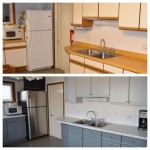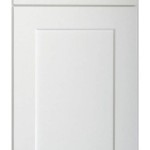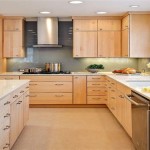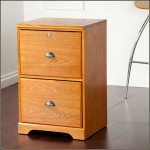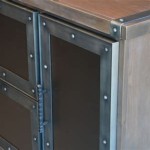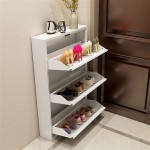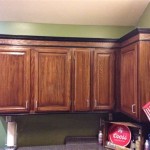Designing The Perfect Bathroom Vanity With Side Cabinets
The bathroom vanity serves as a focal point within the space, providing both aesthetic appeal and essential functionality. While the central vanity unit often receives primary attention, incorporating side cabinets elevates the design, maximizing storage and optimizing the overall bathroom layout. Thoughtful design considerations are crucial when integrating side cabinets to create a harmonious and efficient bathroom environment. This article explores key factors in designing the perfect bathroom vanity with side cabinets, encompassing space planning, storage needs, style considerations, and practical implementation.
Space Planning and Measurement
Accurate measurement and careful space planning form the foundation of any successful bathroom design. Before selecting a vanity and side cabinet configuration, it is essential to meticulously measure the available space. This includes width, depth, and height dimensions of the bathroom, taking into account existing fixtures such as toilets, showers, and bathtubs. Measurements should also account for door swing clearances and sufficient walking space to ensure comfortable movement within the bathroom. Once the overall dimensions are established, a detailed assessment of the potential vanity area is necessary.
Consider the placement of plumbing lines, electrical outlets, and ventilation ducts. Obstructions can influence the size and placement of the vanity and side cabinets. If plumbing relocation is feasible, it can provide greater flexibility in design options. However, it is usually more cost-effective to work within the existing infrastructure. After determining the usable space and accounting for all obstructions, it is possible to begin exploring different vanity and side cabinet configurations.
The goal is to achieve a balanced layout that maximizes storage while maintaining a visually appealing and functional space. Consider the scale of the vanity and side cabinets in relation to the overall bathroom size. Oversized units can overwhelm a small bathroom, while undersized units might not provide sufficient storage in a larger space. Careful consideration of these factors will ensure a harmonious and well-proportioned design.
Assessing Storage Needs
Storage is a primary function of the bathroom vanity, and incorporating side cabinets significantly expands storage capacity. To design an effective vanity and side cabinet system, it is imperative to assess individual storage needs and preferences. This involves evaluating the types and quantities of items to be stored, as well as considering the frequency of use. Different items require different storage solutions, from drawers and shelves to specialized organizers.
Common bathroom items include toiletries, towels, cleaning supplies, personal care products, and medication. Larger items, such as spare towels and bulk purchases, might require deeper cabinets or shelving. Smaller items, such as makeup and grooming tools, benefit from organized drawers with dividers or customized compartments. The number of individuals using the bathroom also influences storage requirements. A family bathroom typically requires more storage than a guest bathroom. Consider how frequently each category of item is used to determine the optimal placement within the vanity and side cabinets.
Items used daily should be easily accessible, while less frequently used items can be stored in more remote locations. Adjustable shelves offer flexibility in accommodating items of varying sizes. Pull-out shelves and drawers provide convenient access to items stored at the back of cabinets. Integrating organizational accessories, such as drawer dividers, shelf organizers, and door-mounted racks, can further enhance storage efficiency and accessibility. Effective storage design not only increases storage capacity but also promotes a more organized and clutter-free bathroom environment.
Style and Material Considerations
The style and material selection for the bathroom vanity and side cabinets play a significant role in the overall aesthetic of the bathroom. Cohesion with the existing design elements is crucial for creating a visually appealing and harmonious space. The style should complement the architectural style of the house, as well as the existing bathroom fixtures and finishes. Common bathroom styles include traditional, contemporary, minimalist, and transitional, each with its own distinct characteristics.
Traditional bathroom vanities often feature ornate details, raised panel doors, and decorative hardware. Contemporary vanities typically have clean lines, sleek surfaces, and minimalist hardware. Minimalist vanities emphasize simplicity and functionality, with a focus on essential elements. Transitional vanities blend traditional and contemporary elements, offering a versatile and timeless aesthetic. The chosen style will influence the material selection, color palette, and hardware choices.
Common materials for bathroom vanities include wood, laminate, MDF (medium-density fiberboard), and solid surface materials. Wood vanities offer a warm and natural look, with options for various wood species and finishes. Laminate vanities are a cost-effective and durable option, available in a wide range of colors and patterns. MDF vanities provide a smooth and consistent surface, ideal for painted finishes. Solid surface materials, such as quartz and acrylic, are non-porous and resistant to moisture, making them a practical choice for bathroom countertops. The material selection should consider both aesthetic appeal and durability, as bathroom environments are often subject to high humidity and temperature fluctuations.
Hardware, such as knobs and pulls, serves as a finishing touch, adding style and functionality to the vanity and side cabinets. The hardware should complement the overall style and material selection, with options ranging from classic to contemporary designs. Metal finishes, such as chrome, nickel, and brass, are common choices, each offering a different aesthetic appeal. The size and shape of the hardware should also be considered, ensuring comfortable grip and ease of use. Coordinating the vanity and side cabinet style, materials, and hardware with the existing bathroom decor will create a cohesive and visually pleasing space.
Lighting Integration
Effective lighting is an indispensable aspect of bathroom design, significantly influencing both aesthetics and functionality. Incorporating appropriate lighting around the vanity and side cabinets is paramount for tasks such as grooming, makeup application, and shaving. The arrangement should encompass a blend of ambient, task, and accent lighting to ensure adequate visibility while enhancing the overall ambiance of the bathroom.
Ambient lighting serves as the primary source of illumination, providing general lighting throughout the bathroom. Recessed lighting fixtures, ceiling-mounted fixtures, or pendant lights can be employed to achieve the desired level of ambient lighting. Dimmer switches are beneficial for adjusting the brightness to suit different needs and preferences. Task lighting is specifically designed to illuminate the vanity area, providing focused light for grooming tasks. Sconces mounted on either side of the mirror, or a horizontal light fixture above the mirror, are common solutions for task lighting. These fixtures should provide even and glare-free illumination to avoid shadows and distortions.
Accent lighting is used to highlight specific features or areas within the bathroom, adding depth and visual interest. Under-cabinet lighting can illuminate the floor area below the vanity and side cabinets, creating a soft and ambient glow. In-cabinet lighting can illuminate the interior of the cabinets, making it easier to locate items. Decorative lighting fixtures, such as small spotlights or LED strips, can be used to highlight artwork or architectural details. When selecting lighting fixtures, consider the color temperature of the light. Warm white light (2700-3000K) provides a cozy and inviting ambiance, while cool white light (3500-4100K) offers a brighter and more energizing effect. Integrating lighting into the vanity and side cabinet design enhances functionality, improves visibility, and elevates the overall aesthetic appeal of the bathroom.
Installation and Practical Implementation
The installation of the bathroom vanity and side cabinets is a crucial step that requires precision and attention to detail. Proper installation ensures the stability, functionality, and longevity of the units. Whether opting for professional installation or a DIY approach, it is essential to follow manufacturer instructions and building codes. Before beginning the installation process, ensure that all necessary tools and materials are readily available. This includes measuring tools, drills, screwdrivers, levels, and plumbing supplies.
The first step is to prepare the installation area by clearing away any obstructions and ensuring that the floor is level. If necessary, shims can be used to level the vanity and side cabinets. Locate and mark the positions of wall studs to provide secure anchoring points. For wall-mounted vanities and side cabinets, it is crucial to anchor them directly to the studs to prevent sagging or collapse. After positioning the units, carefully connect the plumbing lines, ensuring proper sealing to prevent leaks. Install the faucet, drain, and supply lines according to manufacturer instructions. If electrical outlets are located near the vanity, ensure that they are properly grounded and protected by a GFCI (ground fault circuit interrupter) outlet.
Once the plumbing and electrical connections are complete, secure the vanity and side cabinets to the wall using screws or bolts. Check the level of the units and make any necessary adjustments. Install the countertops and sinks, ensuring a proper seal between the countertop and the vanity. Finally, install the hardware, such as knobs and pulls, and test all plumbing and electrical connections. Inspect the installation for any leaks, loose connections, or other issues. Addressing any problems promptly will prevent future damage and ensure the proper functioning of the vanity and side cabinets. Proper installation is essential for achieving a functional and aesthetically pleasing bathroom design.

Corner Bathroom Vanity Ideas 18 Designs For Any Space Decoist
:strip_icc()/101455229-3cf9f852baee4d3e94cb542b3ef55b9f.jpg?strip=all)
45 Gorgeous Bathroom Vanity Ideas That Fit Every Style

25 Bathrooms With Built In Makeup Vanities

Custom Bathroom Vanity Ideas Cabinet Design Inspiration Gallery

18 Unique Modern Bathroom Cabinet And Vanity Design Ideas
:strip_icc()/101571092-ac31e7d5060d41f28d5113311c9a095c.jpg?strip=all)
45 Gorgeous Bathroom Vanity Ideas That Fit Every Style

15 Beautiful Bathroom Vanity Units Perfect For Compact Spaces
:strip_icc()/101524113-f4ff481d0d9e489db30243861bd221db.jpg?strip=all)
45 Gorgeous Bathroom Vanity Ideas That Fit Every Style
:strip_icc()/101697369-cc97b273859f47419c26734a22d82a1b.jpg?strip=all)
45 Gorgeous Bathroom Vanity Ideas That Fit Every Style

Rta Bathroom Vanity Cabinets For Lily Ann
Related Posts

